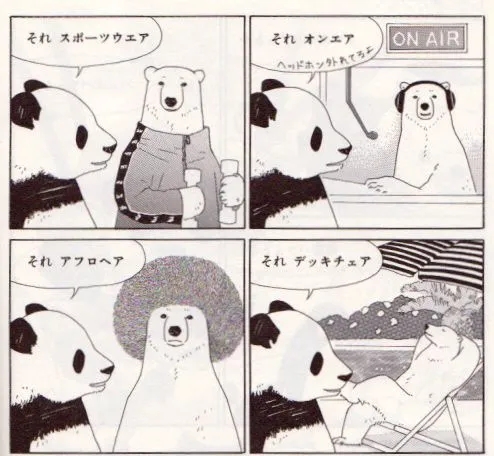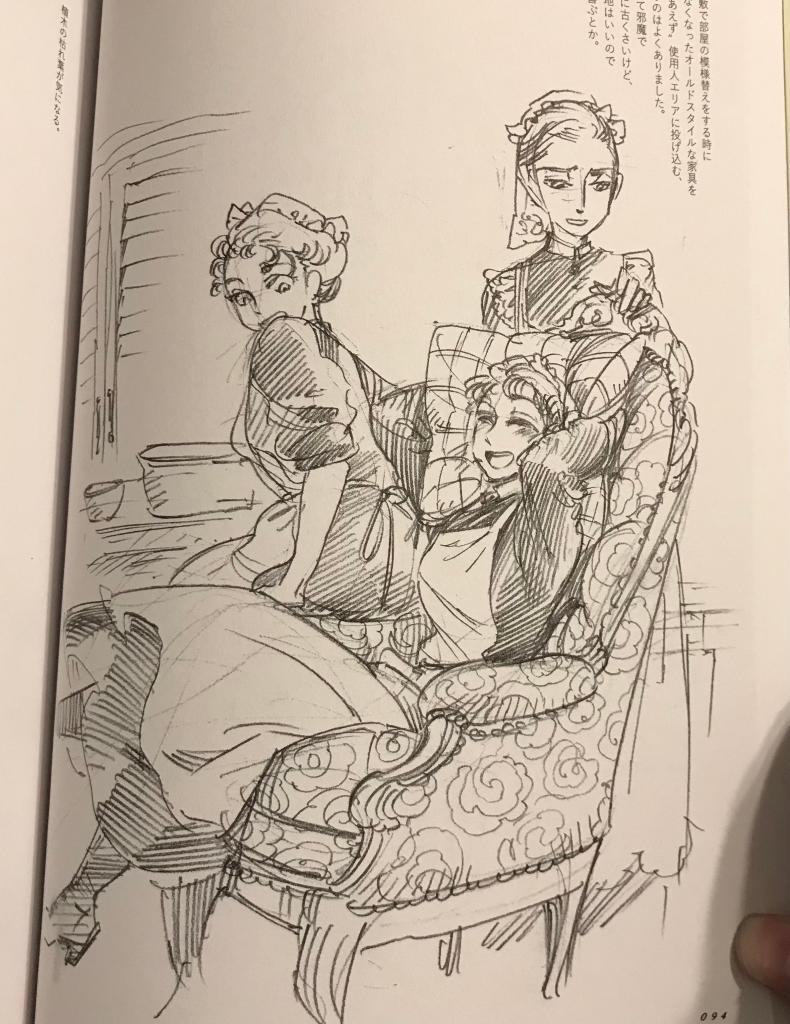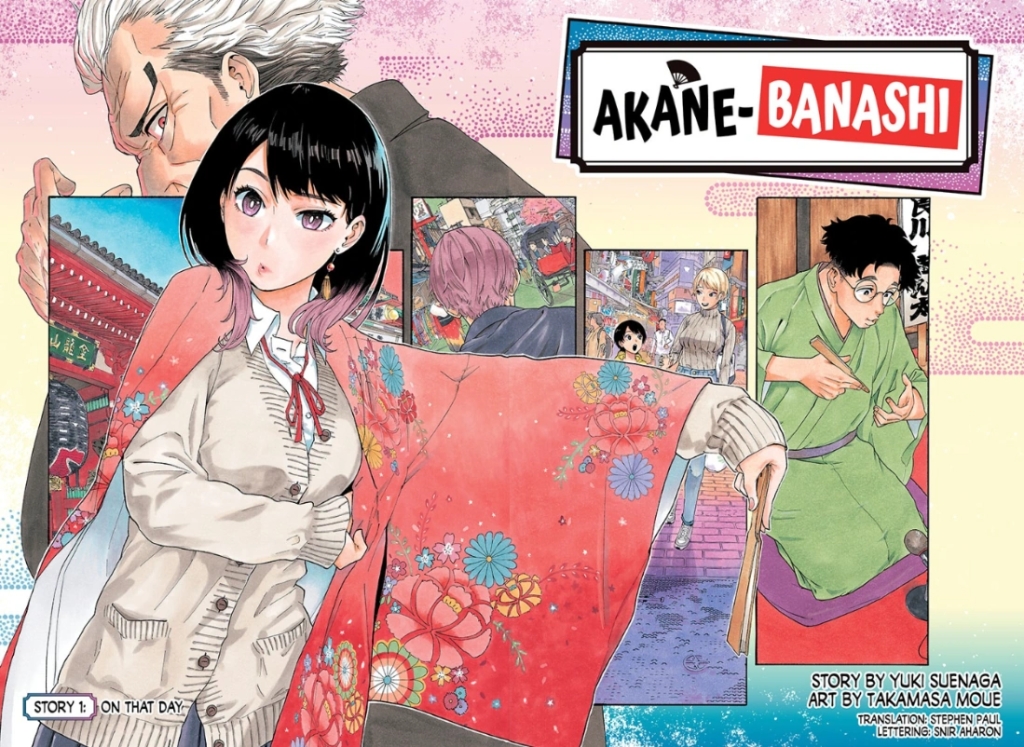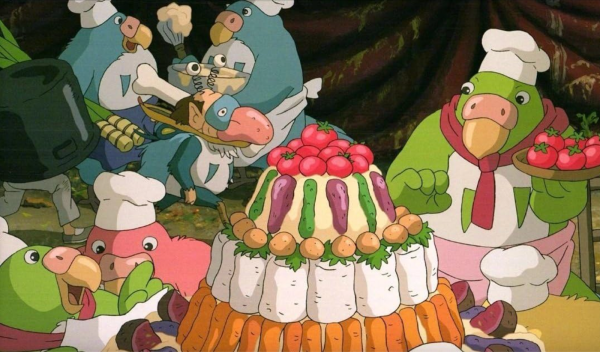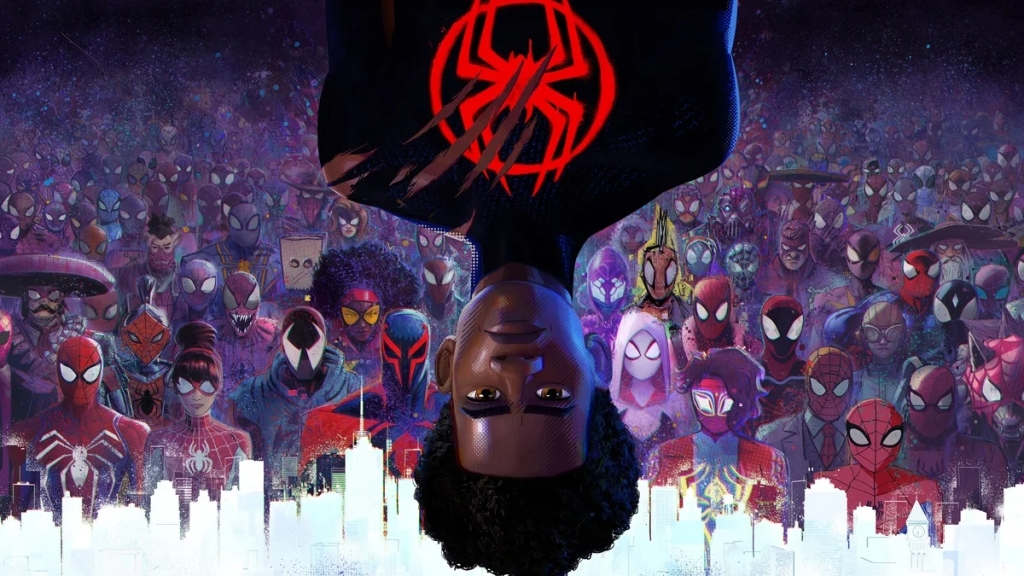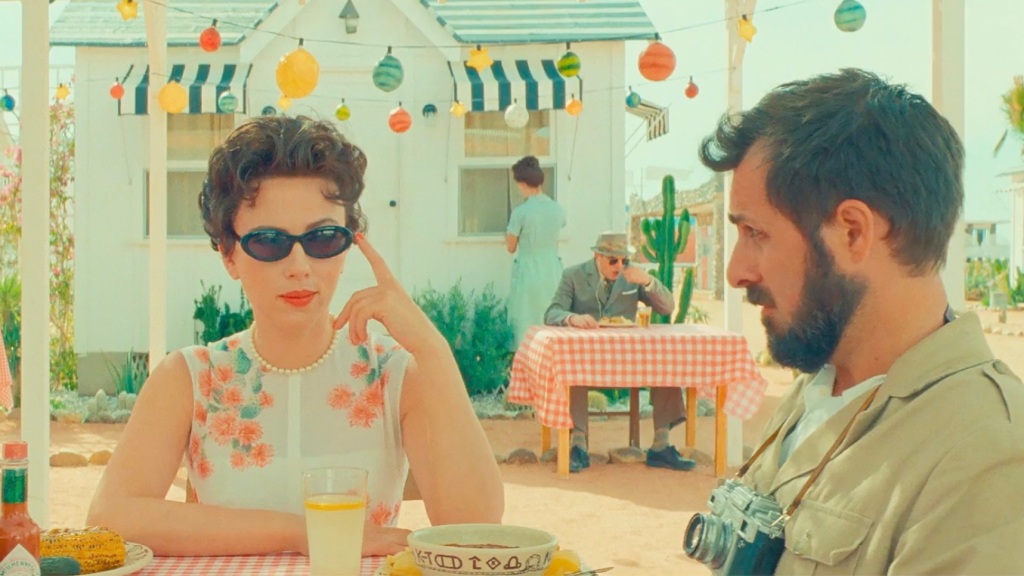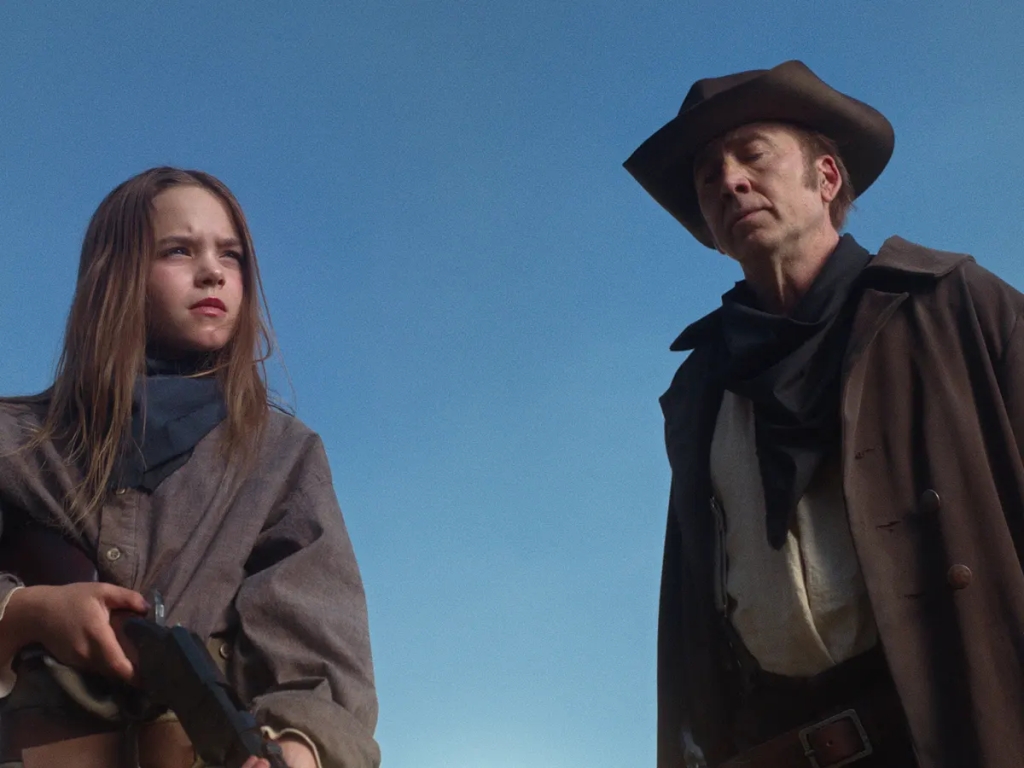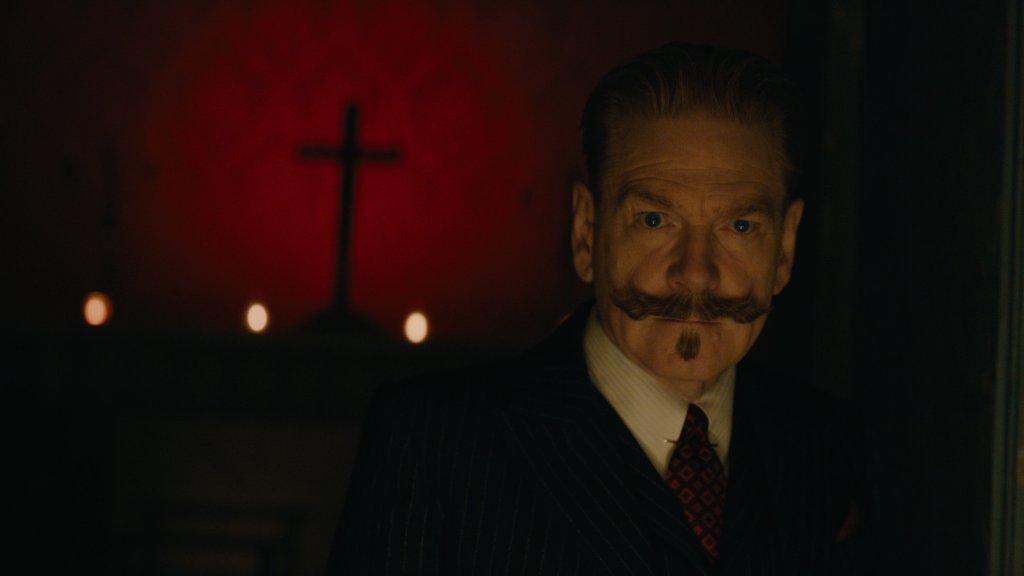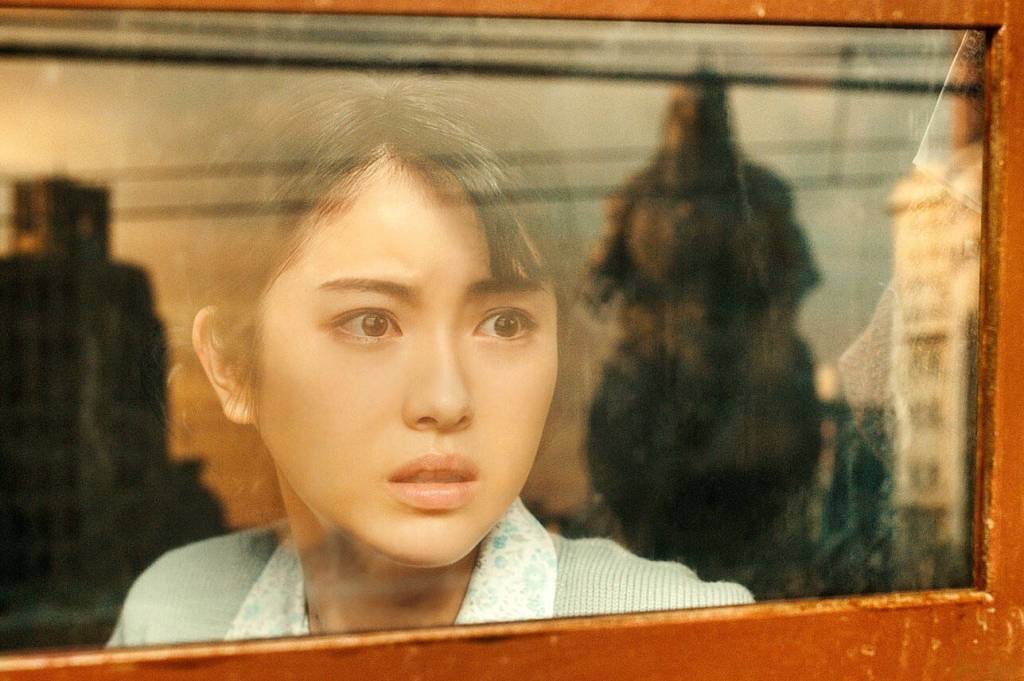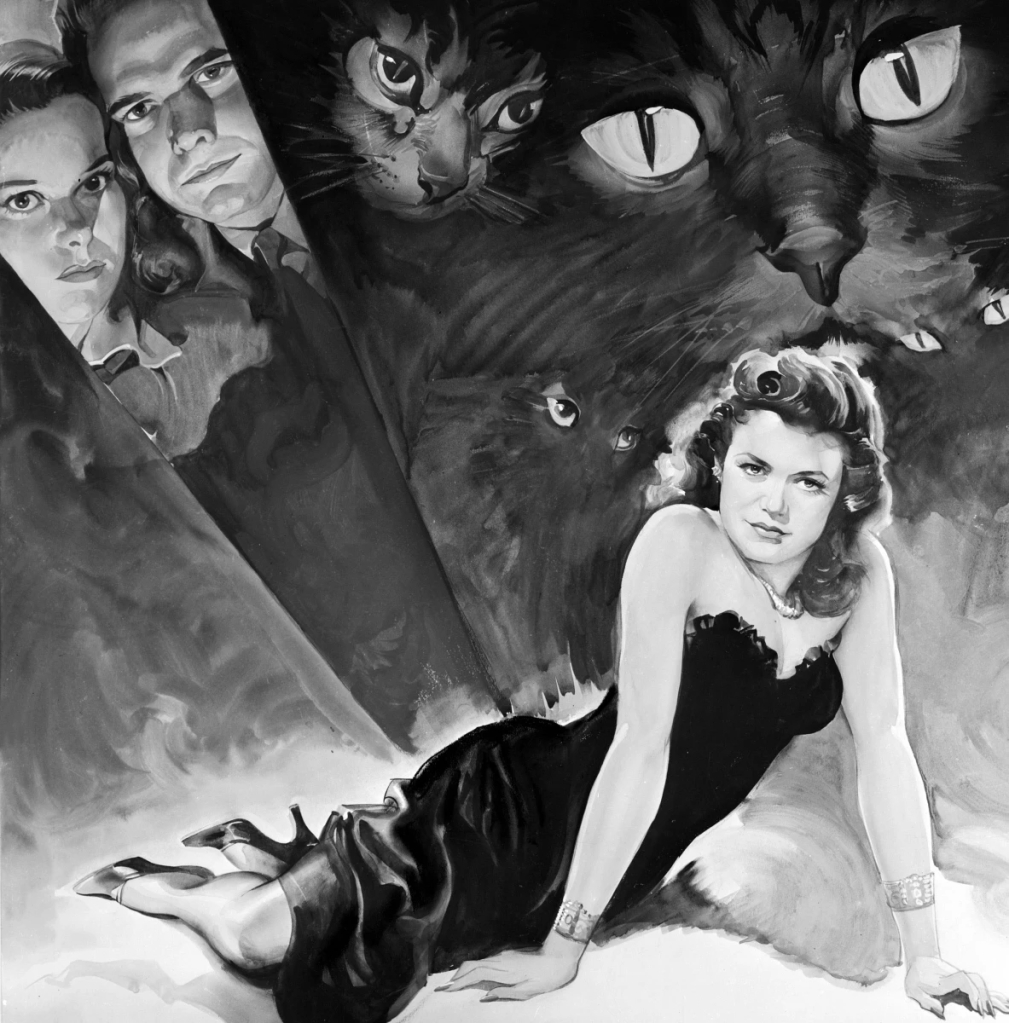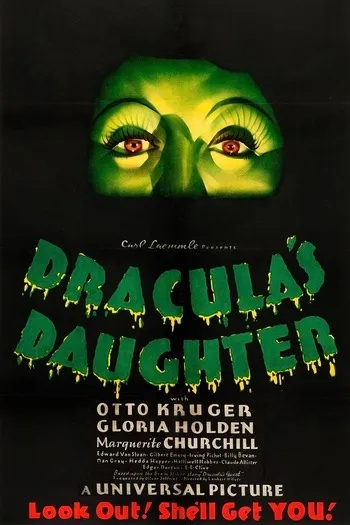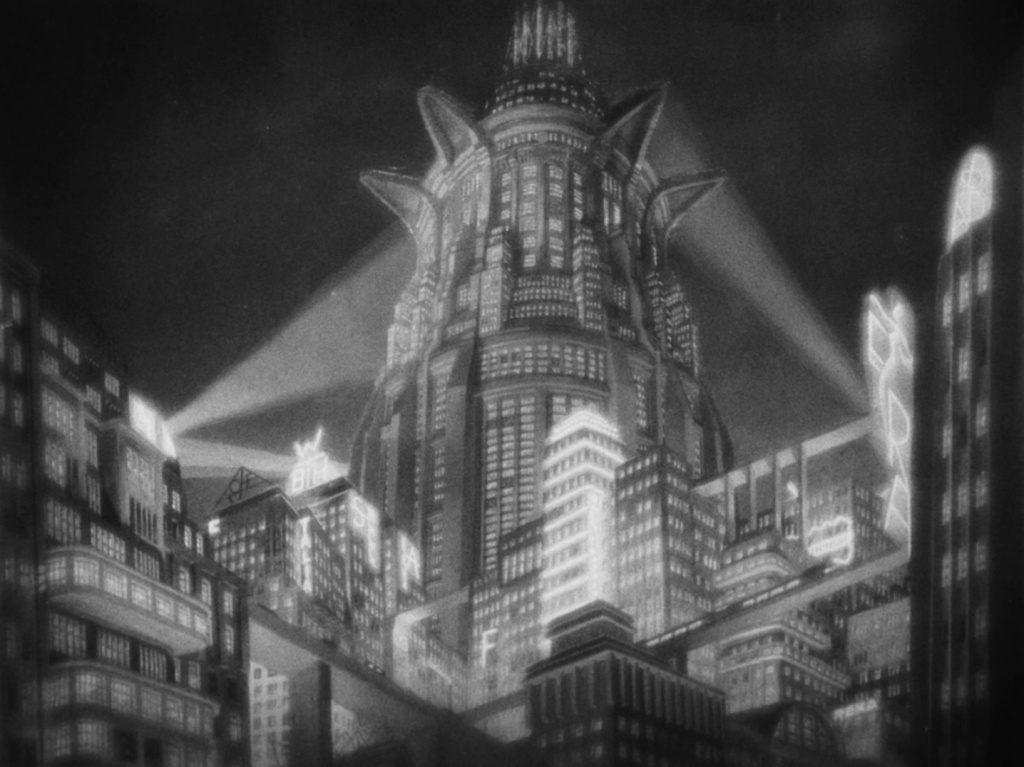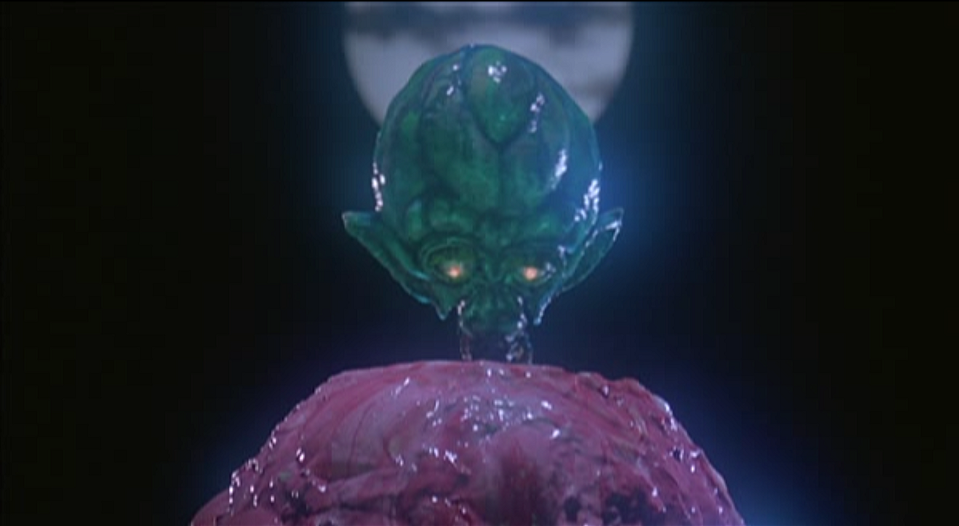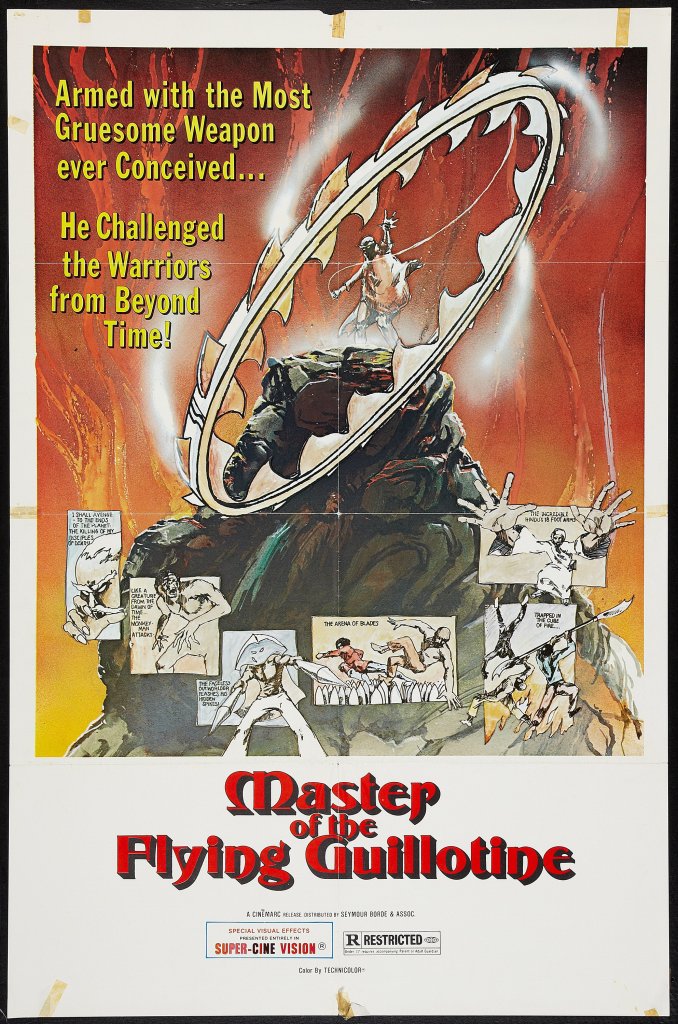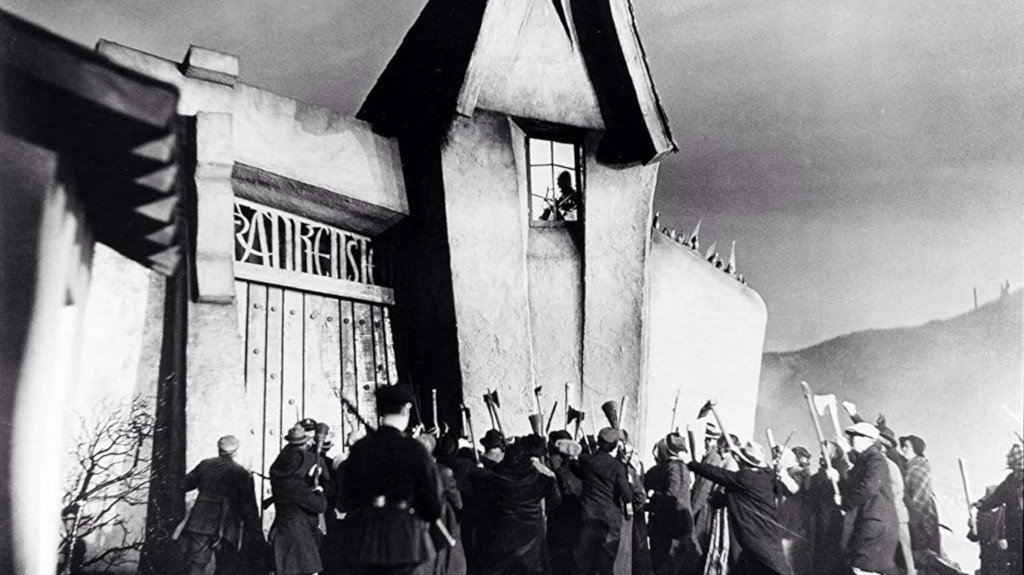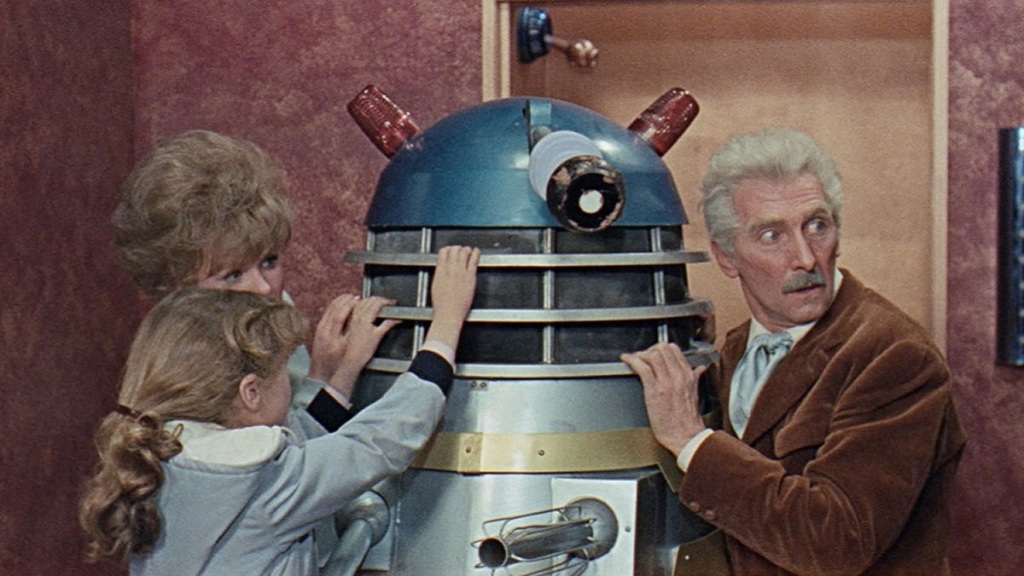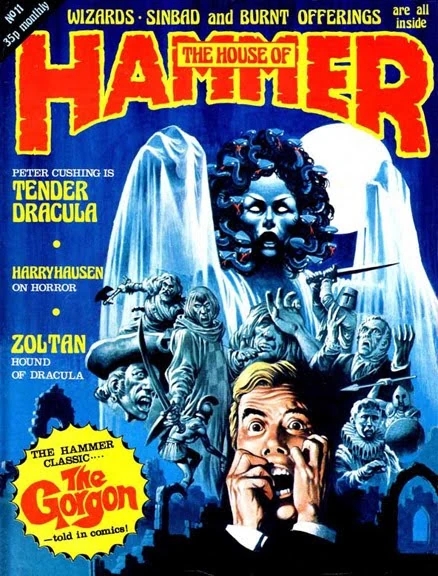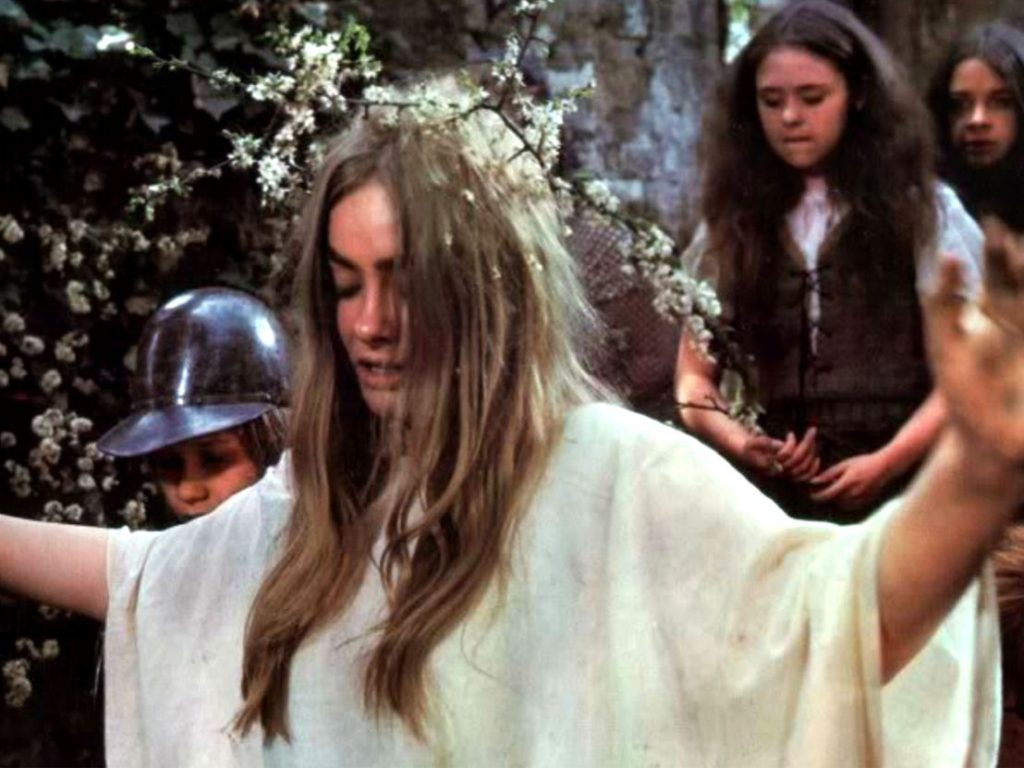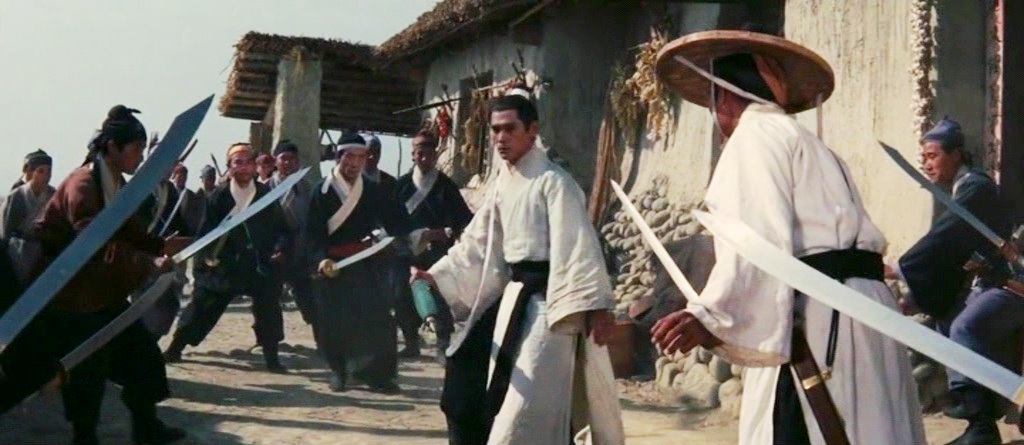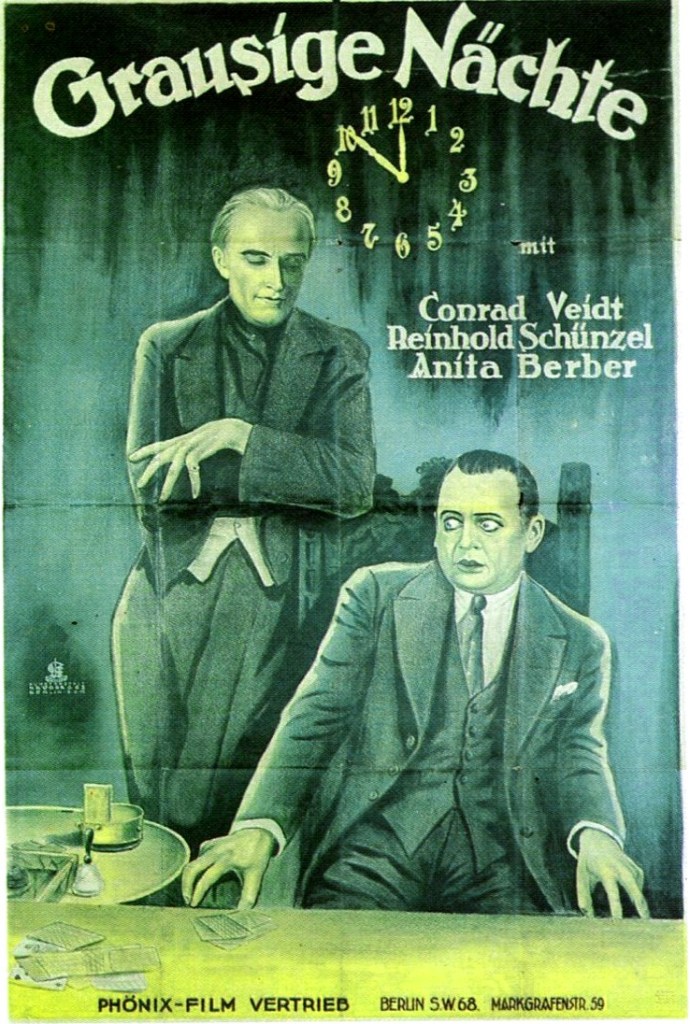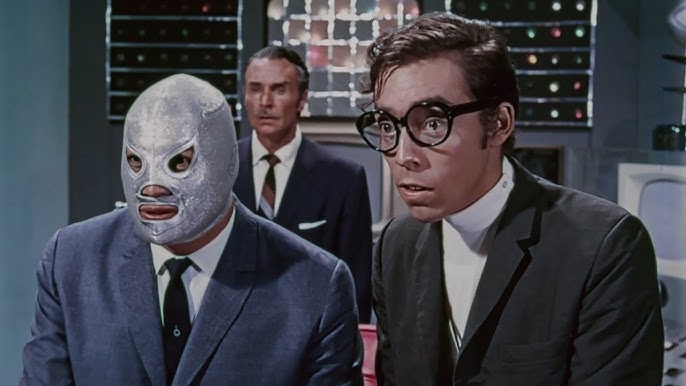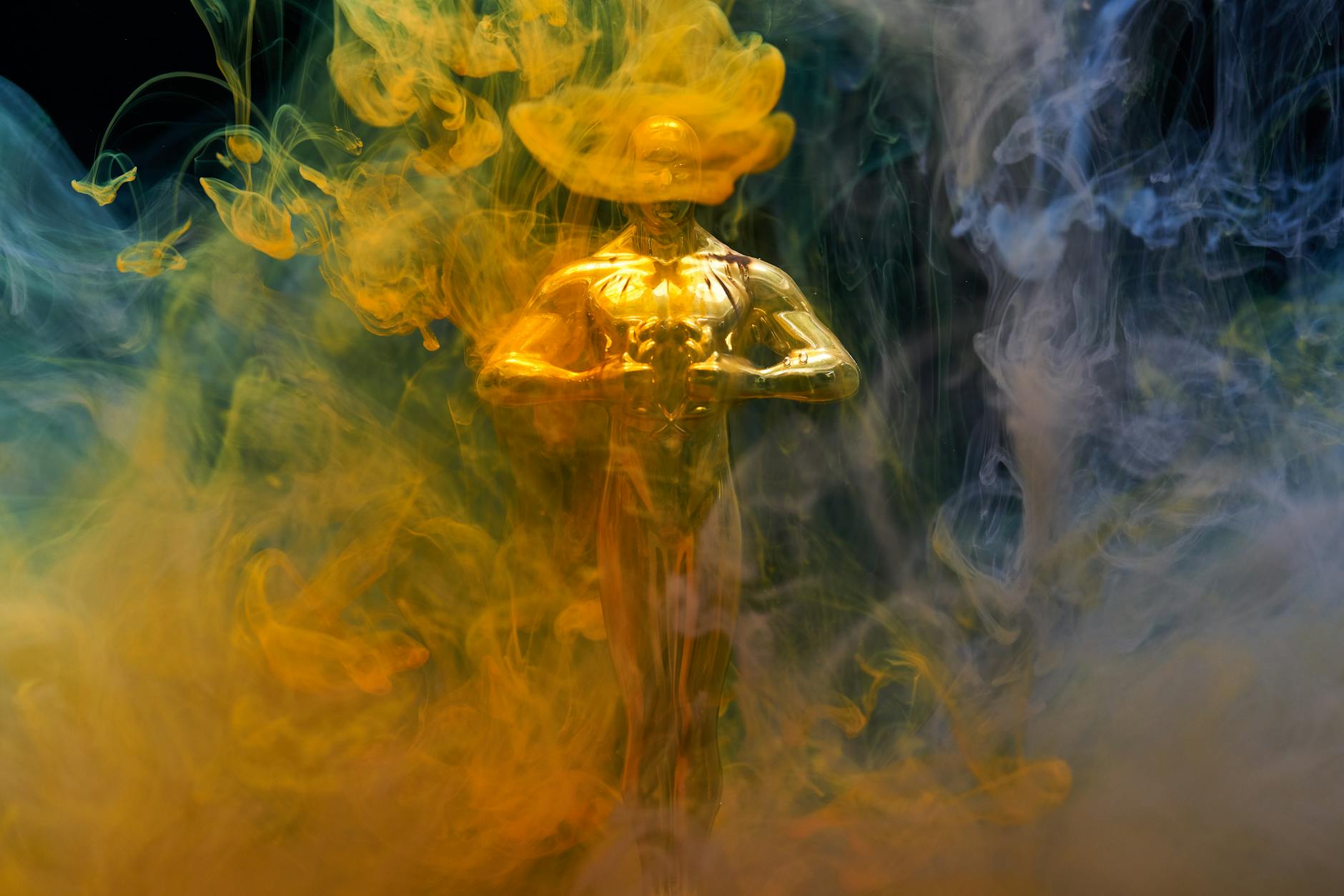
Best Video game:
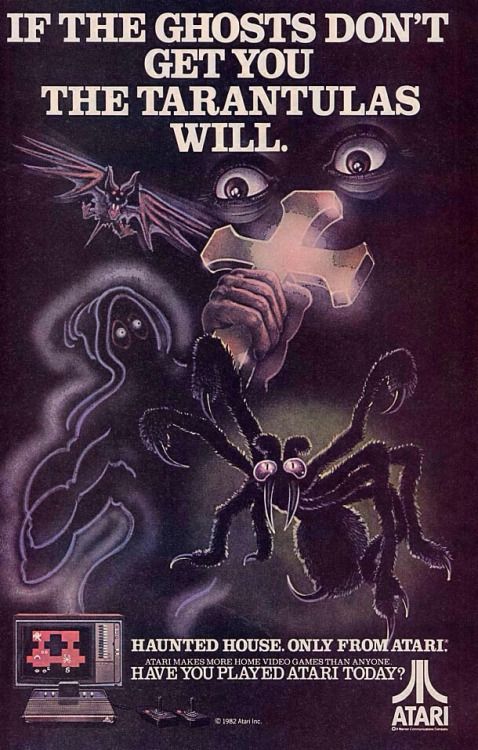
Haunted House: It probably comes as no surprise to everyone at this point that I love the Atari 2600. A sadly overlooked console, the 2600 might currently be the best retro console to collect for. Getting games and hardware for this machine is dirt cheap, and the 2600 offers a plethora of great titles to choose from and enjoy. Of all the games I’ve played for it, the game that stands out the most for me this year is Haunted House.
Haunted House combines the pick up and play elements of many games on the system with creative gameplay emphasising exploration. Its premise of exploring a haunted house, searching for a Urn, and then finding an exit may not sound like much especially on such a low powered system, but it is a game that is far greater than the sum of its parts. One thing that stands out about this game is the sense of mystery it provides. The fact that you are exploring a house while in the dark with enemies and locked doors makes for a spooky game, without resorting to the modern cliches of violence and trying to outright terrify the player. Haunted House also offers incredible replay value taking full advantage of the VCS’s many console switches and allowing for a randomised experience that is different each time long before roguelikes became popular. These factors make Haunted House a joy to play for all ages that has me coming back again and again for more fun.
Runners up:
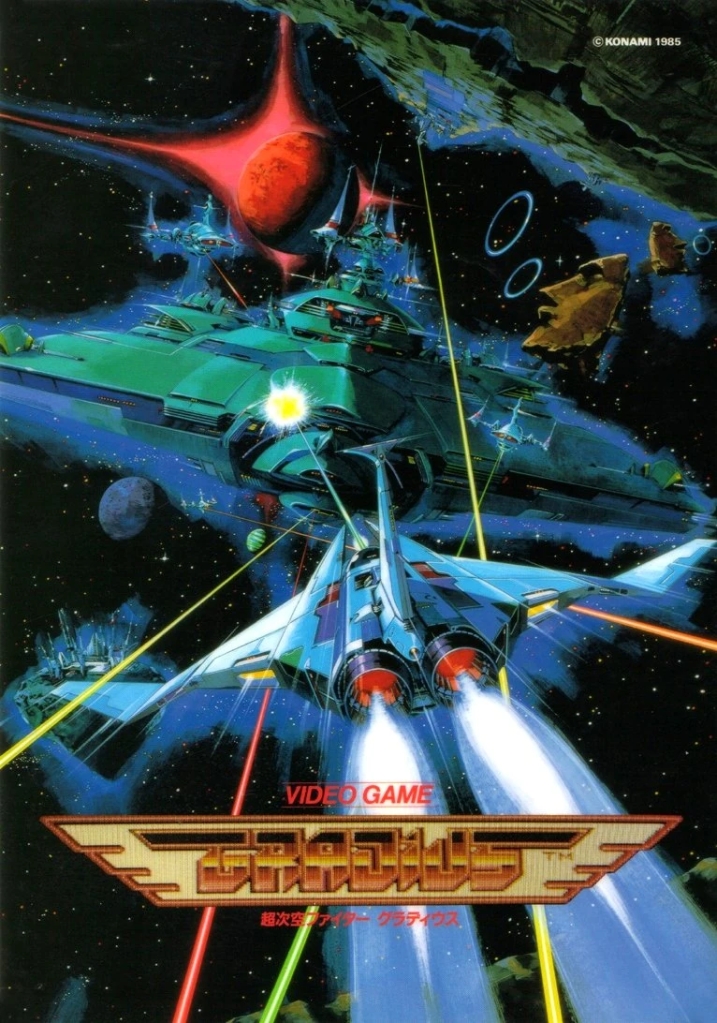
Gradius: Gradius is bone crushingly hard for me. While many seasoned Shmup fans might find Graduis mild in comparison to the more modern bullet hells, I didn’t grow up playing Shmups and have spatial disorder making them a struggle for me. So why do I keep coming back for more pain? Despite the difficulty I have with it I also love this game. It is not only a great introduction to the Shmup genre, but also a staple of it for a reason.
Gradius is a tough, but fair game. It is difficult enough to feel thrilling while also not being too overwhelming for a beginner like me to learn from. While I haven’t gotten far I continue to practise and improve, and just as importantly never get bored or frustrated thanks to great game design. I love that there are all sorts of obstacles to contend with, including the famous Easter Island statues that spit out death at you. The gameplay is also great because it rewards learning to dodge thru barrages, and managing the screen so that the enemies don’t overwhelm you. The game’s classic and memorable tunes are also noteworthy, help drive the experience, and bring intensity that makes me want to keep trying again despite repeatedly dying.
Graduis has solid gameplay, memorable music, and a fair amount of difficulty that keeps me coming back even though I constantly lose. While I still have a long way to go I really look forward to playing the rest of the series, and learning more about Shmups from this classic game.

Pong: You might think that the first major arcade game hit would no longer be appealing. Especially in this age of blockbuster video games and computers with massive processing power you might think Pong feels primitive and lacking. You would be wrong though. Pong remains one of the most entertaining games I have played. Similar to games like Tetris, Pong is a game that takes many forms and variations, but remains a solid experience thanks to its two player competitive action.
Despite basically being a game of virtual table tennis, Pong consoles take so many different forms and have a ton of fun variations. One thing that is extremely fascinating about Pong is how many consoles and console designs there were for it. Pong consoles of all shapes and sizes popped up during the first wave of commercial video game systems with a wide variety of controllers and minor graphical differences to them. My girlfriend has got me into collecting these often gorgeous and fascinating antiques which are often surprisingly cheap despite their ages and interesting designs.
When it comes down to it though, what is most important about Pong is the gameplay. While it is simple enough that almost anyone can learn and play it, what makes Pong even more exciting is that it is designed to be played with others! Playing Pong is a game of virtual ping-pong that comes down to purely skill and fun, while being far more accessible then actual table tennis. I’ve spent countless hours this year battling my girlfriend, making it one of the few primarily multiplayer games that I have played a lot of. I’m sure that next won’t be much different, and I look forward to testing out my two new pong consoles with her and marvelling at how fun and built to last they are.
Great games such as Warlords and Arkanoid/Breakout all owe their existence to this game, but Pong stands on its own as a great experience to share with others and explore.
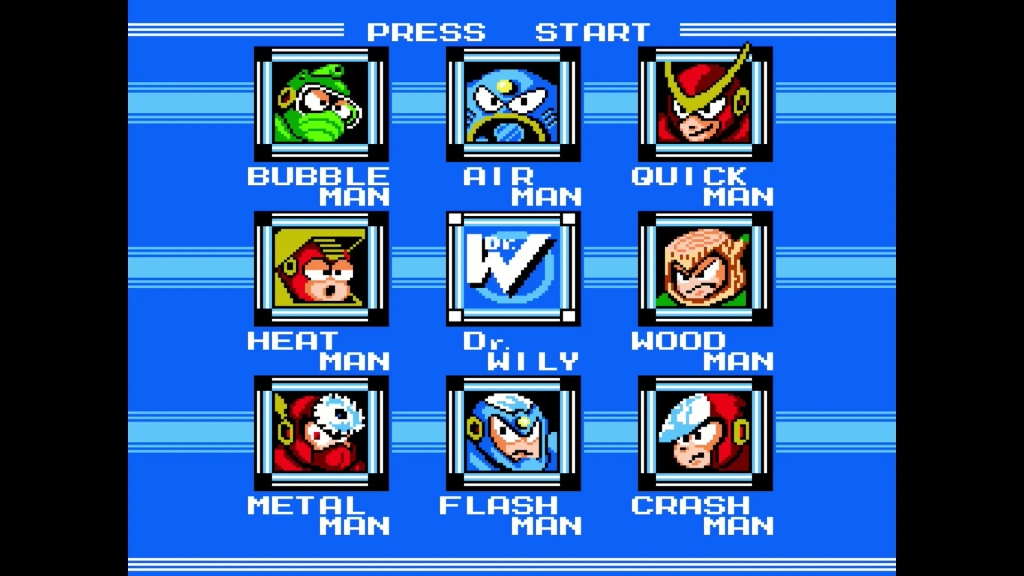
Mega Man 2: This year saw me beating every Mega Man game from the original series. While there were some other great stand outs I still have to give the nod to Mega Man 2. Mega Man 2 is an incredible game that highlights the best the series has to offer. While fairly easy in comparison to other games in the series it is a blast to play, and isn’t a cakewalk. Mega Man 2 features a lot of creativity, tough but fair gameplay, and includes some of the best robot masters and stage designs of the series. Whether it is blasting through the forests of Woodman, weaving through the fast moving lasers of Quickman’s stage, braving disappearing platforms over lava, or battling a robotic dragon while jumping platform to platform Mega Man 2 is sure to provide a creative and thrilling experience.
One element that absolutely has to be mentioned about this game is its soundtrack. Mega Man 2 has some of the best music in any game. Even among the other bangers of the Mega Man series the music offered in two feels special. Every track just feels, “right,” and is perfect for the stage it is designed for and the situations it represents. While not a perfect game Mega Man 2 does avoid many of the pitfalls that some other games in the series have (such as being overly difficult), and is my favourite Mega Man game.
Movies of the year:
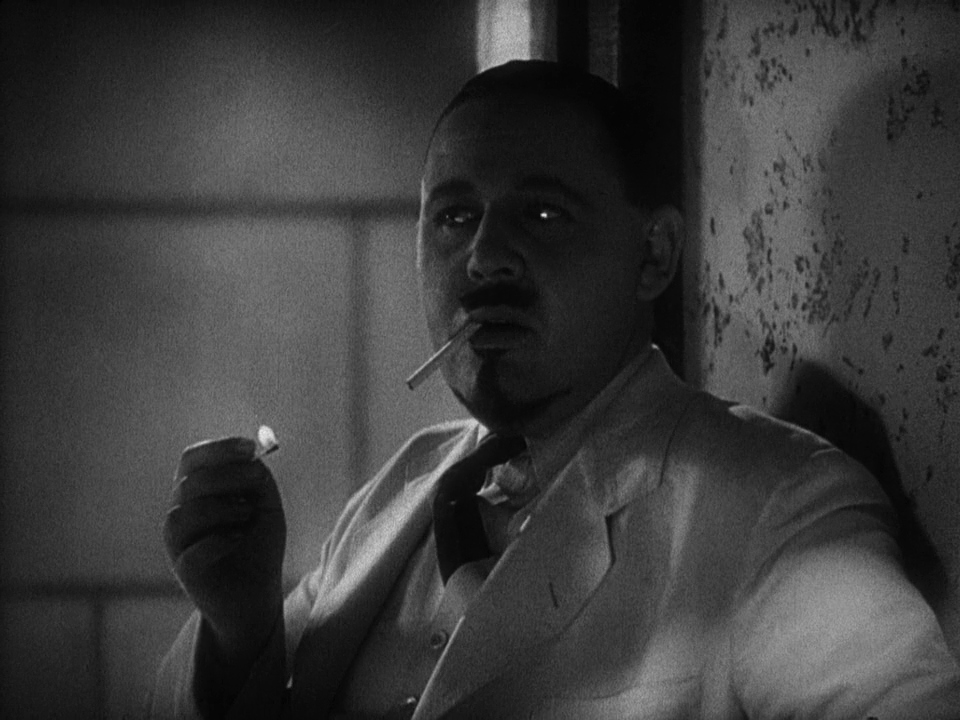
Island of Lost Souls: The Island of Lost Souls is one of the most criminally overlooked horror films of all time. An adaptation of the famous novel the Island of Dr. Moreau, Island of Lost Souls does an outstanding job adapting the story into a film and also adding additional lurid elements. The film stars Edward Parker, a man who ends up trapped on an island where the mysterious Dr. Moreau and his assistant are doing cruel experiments. Morceau hopes to eventually turn animals into humans through gruesome surgeries, and by giving them a strict moral code. While at first reluctant to share his work and wanting Parker off his Island, Moreau eventually takes an interest in seeing Parker get together with Lota, a panther-woman who he considers his greatest experiment.
While many in the cast are lesser known, everyone in the film is great. Particularly great though is Charles Lauton as Dr. Moreau. Lauton’s Moreau is an obsessive and sinister man who is only concerned with his studies. Despite his cruelty Morceau considers himself an advancer of science. He comports himself with a creepy sense of sophistication, despite totally lacking a sense of caring or morality.
Although this is a post-Haye’s code film Island of Lost Souls surprisingly doesn’t skimp on the sexual content and violence. Island of Lost Souls is a film that in many ways is far more extreme for its time then most other films, even those before censorship. If anything the film increases to what would have been considered objectionable content. It adds in subplot about Moreau attempting to test human animal sexual relations, and a lurid ending scene dripping with gruesome implied violence. I’m glad I got a chance to see this excellent overlooked film with my father, who has appreciated (and put up with) many movies with me!
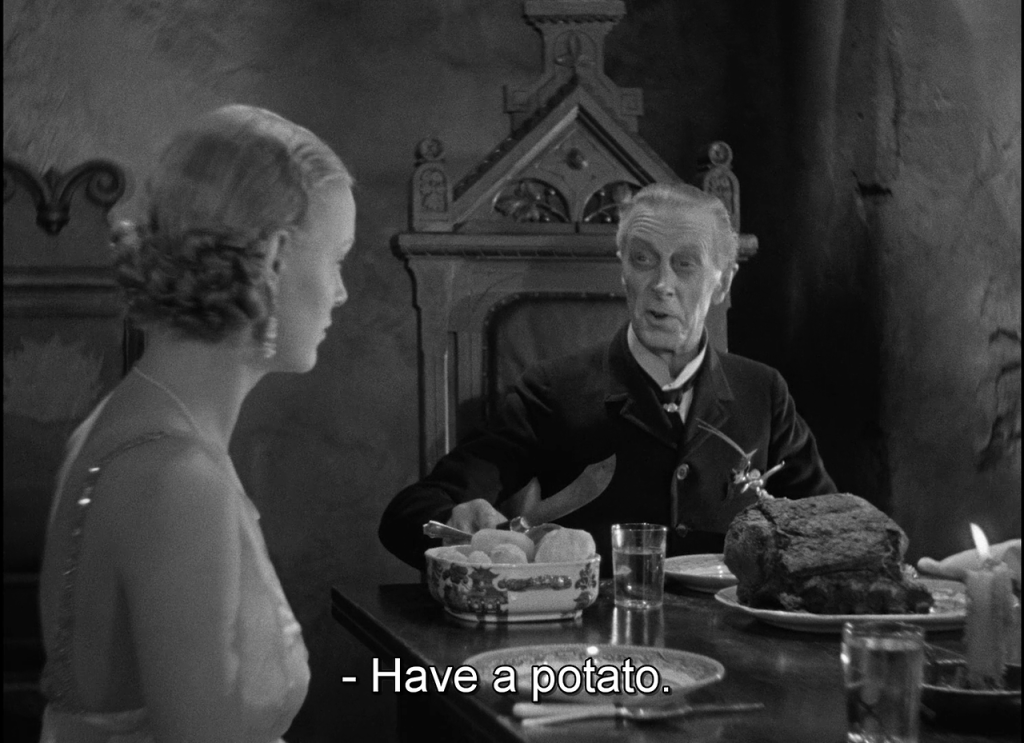
The Old Dark House: Another criminally underrated film is The Old Dark House. While James Whale’s other universal films such as Bride of Frankenstein and The Invisible man are lauded for their combination of horror and comedy, for some reason The Old Dark House is far less well known despite having similar themes. This movie is as strange as it is great, highlighting many of Whale’s trademarks including relatable characters, effective horror camp, and many unusual and creative concepts.
The Old Dark House stars a couple and their cynical world weary friend who are forced by a storm to take refuge in a strange old mansion with even stranger inhabitants. They are soon joined by another two guests, and forced to deal with the increasing danger and madness of the house’s bizarre occupants. With nowhere to go they have to make it through the rainy night together and survive.
James Whale’s direction transforms this haunted house narrative into a bizarrely comedic one. Though it has the expected horror elements, I think The Old Dark House could best be described as a parody of a haunted house film. Odd lines like, “Have potato,” “They were all godless here. They used to bring their women here – brazen, lolling creatures in silks and satins. They filled the house with laughter and sin, laughter and sin. And if I ever went down among them, my own father and brothers – they would tell me to go away and pray, and I prayed – and left them with their lustful red and white women,” and “No beds! They can’t have beds!” are iconically strange and memorable.
Among the actors Ernest Thesiger and Eva Moore do an incredible job as the comically eccentric and constantly quarrelling brother and sister of the house, while Charles Laughton and Lilian Bond also do a great job of portraying surprisingly complex and sympathetic characters. Ironically one of the lesser actors (though still excellent) is Boris Karloff who is stuck with the role of a mute drunk brute of a butler. Special mention should also go out to Brember Wills whose portrayal of Saul is effectively unhinged and unpredictable.
The Old Dark House ranks among the best of Whale’s pictures, and is a delightfully eccentric treat for anyone who enjoys his other pictures and his off kilter style.
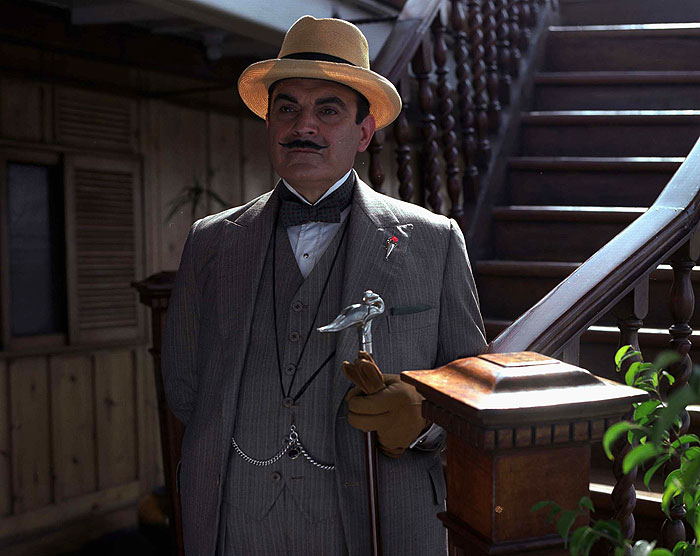
Death on the Nile (David Suchet): My favourite adaptations of Agatha Christie’s Hercule Poirot novels would have to be the ones that star David Suchet as Poirot. Not only do these interpretations stick closest to the stately feel and methodical pace of the original stories, but Suchet does an excellent job giving dimension to Poirot’s character. Of all the adaptations of Poirot with Suchet I have seen thus far I think Death on the Nile may be my favourite.
Not only is Death on the Nile my favourite of the Poirot novels, but I also feel that the ITV version does an excellent job of capturing the story on a low budget. This adaptation of the story avoids the excesses of the Branagh version, while still embodying the liveliness and large scale setting of the novel. It is really impressive to me not only how much filming actually took place on a real steam ship in Egypt, but how the adaptation streamlines the novel while using the visual language of cinematography to enhance it. This film is clearly concerned less with the portraying of bombastic spectacle, and more with making sure that it adapts the story as well as it can within a short amount of time. As a result it opts for a mostly non-celebrity cast, instead using a number of great British character actors to cover many of its major roles. Suchet is also especially great as Poirot in this movie, and gives Poirot a sadness and depth that is especially tangible.
This adaptation has been my favourite so far of a Hercule Poirot story. While nothing can beat reading the novel, this movie does come remarkably close.
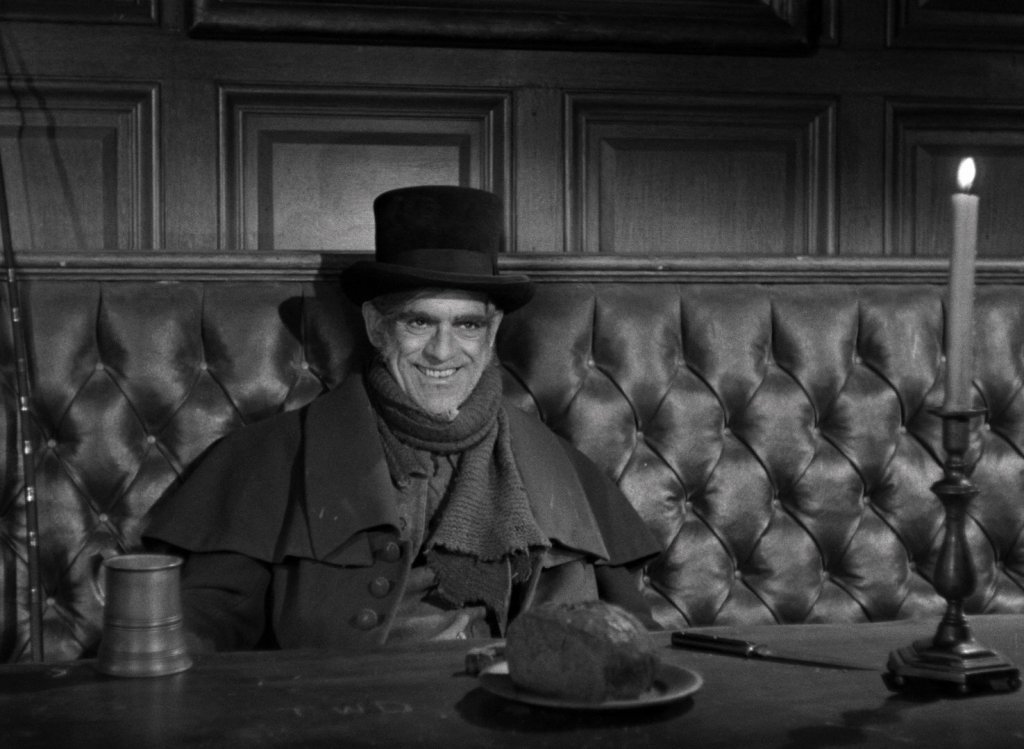
The Body Snatcher: Many horror movies of 1940’s were designed as works stressing commercial appeal, rather than creating complex and creative filmmaking. As a result many of the films of the 40’s (especially those from Universal) often either failed to tread new ground, and/or lacked the class, budget, and gravitas of earlier efforts. A major exception to this rule though were the films produced by Val Lewton. Unlike Universal’s films of the time that valued monsters and spectacle, Lewtons films were more classy affairs based in psychology and the playing off the viewer’s imagination. These elements are all strongly highlighted within The Body Snatcher.
This movie is based upon a story written by Robert Louis Stevenson about 19th century anatomists and resurrectionists who dug up corpses and provided them to doctors for study. Because of its unusual subject matter The Body Snatcher is unlike many other films of the era. The movie centres around Dr. Wolfe MacFarlane, an anatomist running a school in Edinburgh who is repeatedly tormented by the resurrectionist and cab driver John Grey. Grey enjoys black-mailing the doctor and having him at his beck and call, but also provides him with corpses to study and helps protect the doctor’s secrets. Caught in between the two are a young mother and her disabled child who want MacFarlane’s help, Meg Cameron the doctor’s house keeper with a secret, and MacFarlane’s new star pupil the conflicted Donald Fettes.
To get the bad out of the way first; this film wastes Bella Lugosi. Instead of getting top billing or a major part, Lugosi is forced to play a hapless janitor. It is a small and thankless role that doesn’t take advantage of the actor’s immense talents and screen presence. All the other actors in the film are excellent, but it is Henry Daniell and Boris Karloff that steal the show. Daniell does an excellent job showing the complexity of the doctor he plays who struggles between his desire to learn and train others to help people, and his dubious connection with Grey, personal ego and shame, and his poor bedside manner. Karloff’s Grey is probably the best part of the film. His sneering face often belies his nasty, oppressive, and opportunistic nature. He delights in tormenting and insulting MacFarlane, and repeatedly upping the ante of his cruelty.
The Body Snatcher is the first film involving Lewton that I have seen, and illustrates his immense skill at crafting horror based on strongly written characters, and a less is more approach.
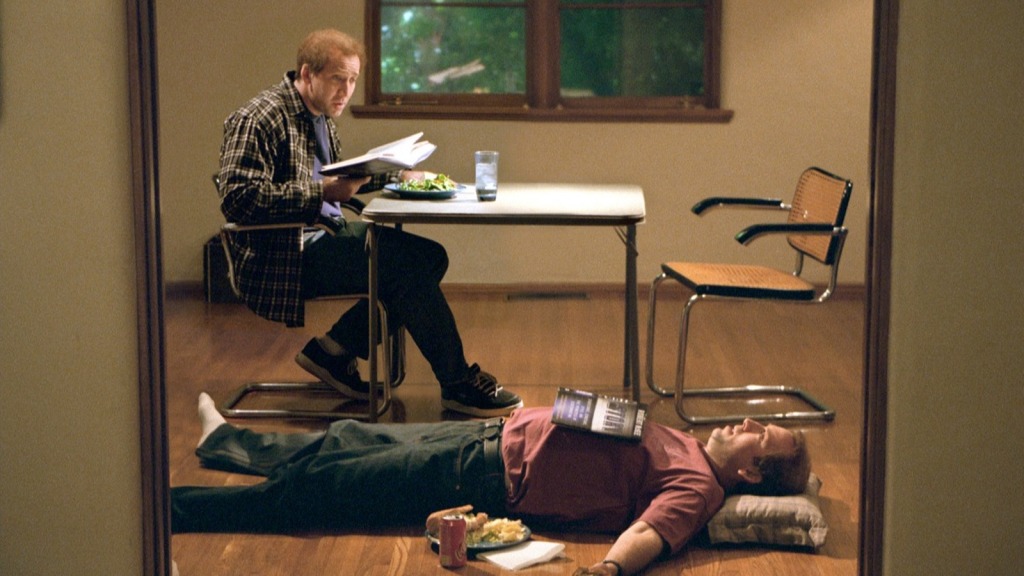
Adaption: Strange doesn’t even begin to describe this picture. Adaptation is unlike any other movie I have ever seen. It features one of my favourite actors Nicholas Cage playing the contrasting brothers Charlie Kauffman and Donald Kauffman (Donald being a fictitious character created for this film). Charlie is chronically neurotic, sexually frustrated, and is constantly concerned about his latest project, a treatment for the film version of the novel The Orchid Thief. The problem with the book though as he puts it is, “… it (the novel) has no story. There’s no story.” His brother on the other hand is confident and sincere, and decides on a whim to also become a screen-writer much to Charlie’s disgust. What follows is a strange meta-narrative where the two brother’s get involved in the very type of story that Charlie is actively trying to avoid as their spying on the novel’s author Susan Orlean’s (played excellently by Meryl Streep) gets them embroiled in her secret relationship with John Laroche, the eccentric subject of Orlean’s book.
It’s hard to put into words just how excellent the acting, script, and story for this film is. Despite its unusual concepts that in lesser hands could have fallen apart, it is somehow able to balance all of its various complexities and elements into a cohesive story. I also couldn’t think of a better cast for this type of film than who was chosen. Cage is mind-blowingly great in his double role, particularly when depicting Charlie’s self loathing which feels suitably heightened, but also very much real. It’s also remarkable how this film creates an effective meta-narrative and how well it parodies Hollywood film writing, bad tendencies, and cliches, and Kaufman himself.
Adaptation is a film that is best viewed, rather than talked about as it fits together so many unusual, original, and incredible elements together. It is absolutely worth a watch, especially for fans of filmmaking and looking for something original.
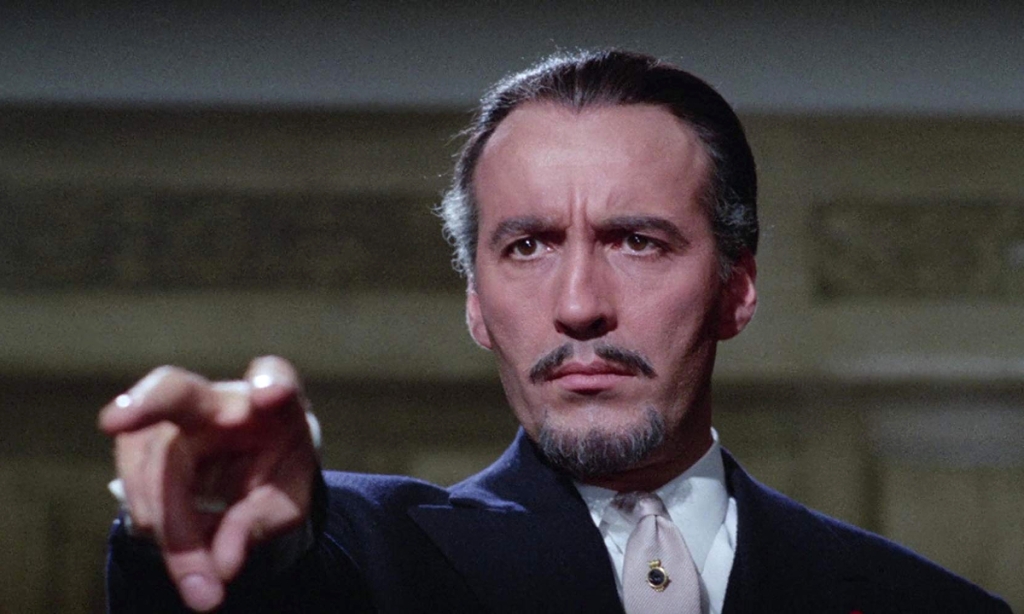
The Devil Rides Out: I have watched and enjoyed a lot of Christopher Lee’s films. Lee made a career out of playing sinister larger than life villains such as Dracula, Sauramon, Kharis the mummy, and Lord Summer Isle. The Devil Rides Out though is a rare case where Lee gets to play the hero of the story.
The Devil Rides Out is about the struggle between the powers of good represented by occultist Nicholas Duc de Richleau and his friend Rex Van Ryn, against a Satanic cult led by the powerful Mocata. Each side is fighting over the lives and souls of Richealu’s friend’s son Simon and another initiate Tanith. Richleau and his allies must endure the intense powers of evil in order to stop the wicked Mocata, and protect the two initiates from being drawn into the clutches of evil.
What makes this film so effective is the constant struggles that the heroes have to face. Throughout the film Richealu’s and his allies are forced to fight and defend themselves against the overwhelming forces of Satan. Mocata and his cult are shown to be formidable and dogged foes who will stop at nothing to claim the lives and souls of their initiates. Mocata (played by Charles Gray) himself is especially threatening with his use of all sorts of spells and hypnosis in order to get what he wants. Despite playing against type Lee is also great. His character’s smart, commanding, moral, and has a strict personality that fits well with Lee’s commanding presence and allows him to convincingly stand against the immense evil that Mocata represents.
The Devil Rides Out is not only memorable for the acting though, it features great effects and music. Despite its low budget Terrence Fisher managed to add in some impressive special effects to the film. Especially impressive is the depiction of the angel of death which manages to be both scary and have gravitas. Another element that stands out for this film is its score. Its composer James Bernard, who is well known for some of the best British and Hammer movie scores of all time (including Dracula, The Curse of Frankenstein, and The Hound of the Baskervilles). He does an excellent job bringing out the danger and mysticism within the film while also elevating its serious tone further.
The Devil Rides Out is a film that draws upon some of the best elements of British horror, bringing them together with some original ideas. The result is a classy and original work that ranks among Terrence Fisher, James Bernard, and Christopher Lee’s best work.
Cheesiest movies of the year:
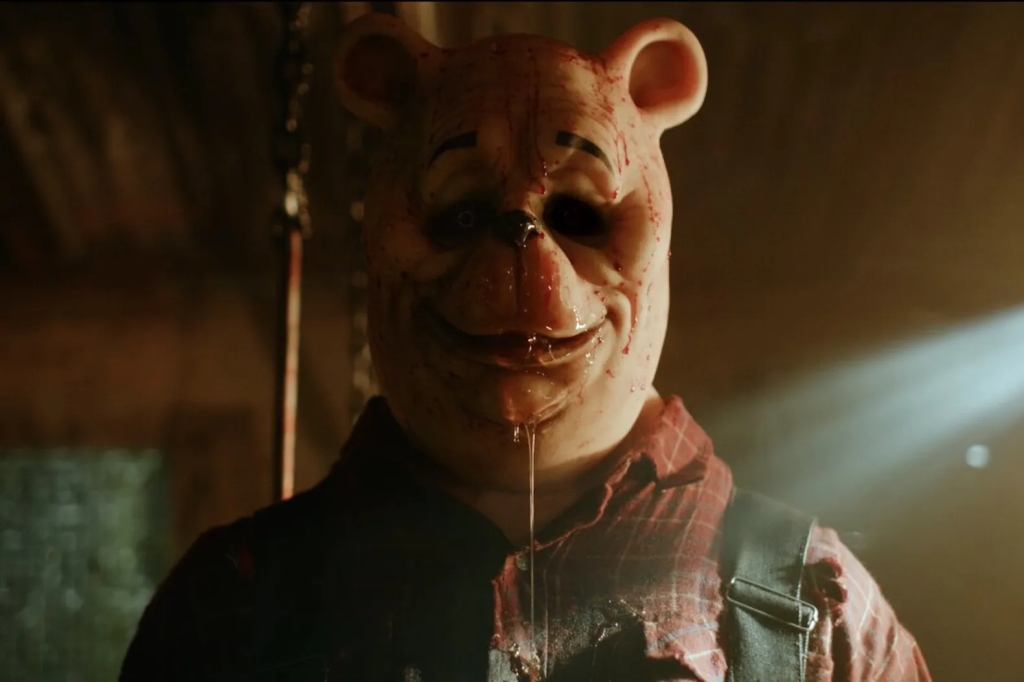
Winnie the Pooh: Blood and Honey: Blood and Honey was probably the worst new film I saw this year, but despite its terrible quality I cannot say I didn’t have fun watching it. For months me and my girlfriend would joke about this film, and seeing it together didn’t disappoint (probably because I had no expectations to begin with). In a way this film was actually a good film as we both enjoyed ourselves thoroughly. We often love repeating phrases from the film such as, “You left,” and “Not your lucky day mate,” to each other and had a great time despite the film’s dismal quality.
Blood and Honey was the result of the original Disney copyright expiring, and a love of the cheesy slashers of the 70’s and 80’s. It has a group of teens on holiday being stalked and killed by a vengeful Pooh bear and Piglet. Is it a badly acted and stupid film? Yes! Was it a blast to see and so bad it was good? Absolutely!
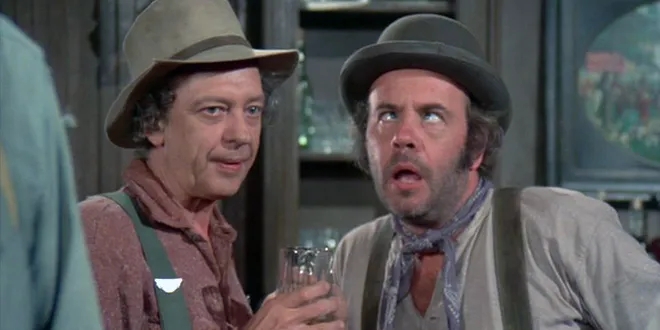
The Apple Dumpling gang series: The 1970’s Disney Live Action films were some of the worst films of their kind. Films like the Shaggy Dog, The Million Dollar Duck, and the Dexter Riley Trilogy were all common during this period and they all have in common that they have aged very poorly. Perhaps the worst offenders of this period though are the films the Apple Dumpling Gang and the Apple Dumpling Gang Rides Again, both terrible movies for different reasons.
The first Apple Dumpling gang film is a snoozefest. It’s a contrived and cliche film about a man who is tricked into taking care of children who end up striking it rich and forming a family with them. It has all the usual lukewarm sentimental and comedy beats you can expect from this era. Sadly it also has Tim Conway and Don Knotts who play two bunging wannabe crooks who mug a lot. The whole affair is dull and predictable to the point where I could tell you exactly what was going to happen next every time even on the first viewing.
The sequel starring Knott’s and Conway is just as bad if not worse then the first film. Instead of cliche sentimentality this movie opts for the two going place to place obnoxiously mugging with a thin subplot about military corruption. In the Apple Dumpling Gang Rides Again things just seem to happen. The film’s lack of a plot also isn’t helped by the lack of actually funny humour, a kiss of death for any comedy film.
These two films are so bad that I now use them as a measurement for bad films. Even most-bad films aren’t as bad as these two are. While they may not be the worst films Disney has to offer, they are the worst Disney movies I have ever sat through.
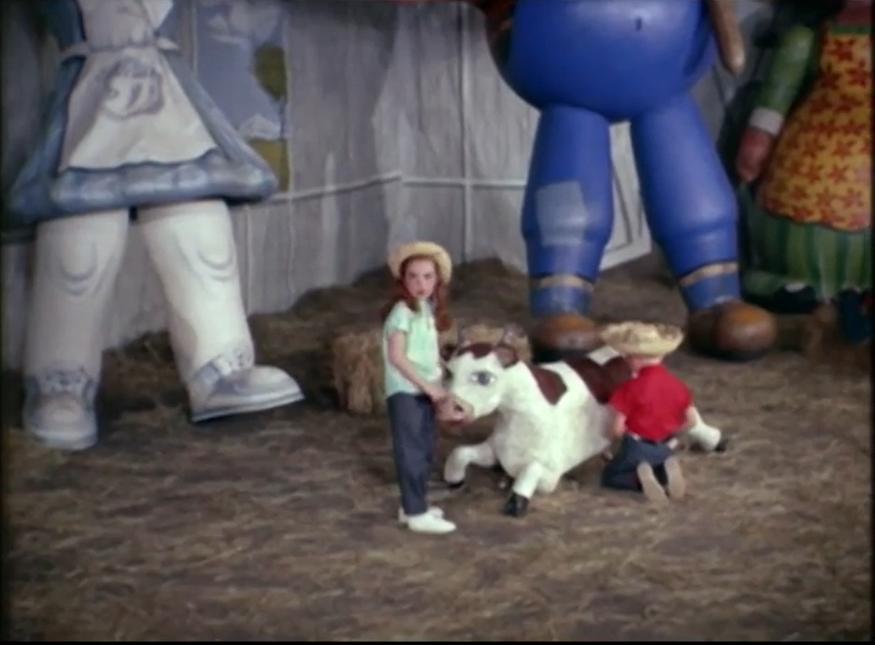
Fun in Balloonland: Fun in Balloonland is without a doubt the worst film I have seen this year. Worse than (Santo and the) Fist of Death, worse than either Apple Dumpling Gang film, worse than Abbott and Costello go to Mars, worse than Between Worlds, worse than The Magical Christmas Tree and worse than Laserblast. This in fact may be the worst film I have ever seen, maybe even beating out Santa Claus meets the Ice Cream Bunny and Beast of Yucca Flats.
Fun In Balloonland is a terrible amateur home film that somehow was commercially released. The first part of the film has a confused and bored looking kid trying to interact with lousy voice overs coming from balloons, while an out of tune piano plays. Things only get worse when the kid is joined by other kids who are forced to awkwardly sing and dance. The second part of the “movie,” involves some of the most awkward commentary ever put to film. A woman gives stilted narration to a frequently out of focus balloon parade footage. Then the film ends with one of the worst songs put to film. DREADFUL beyond belief!
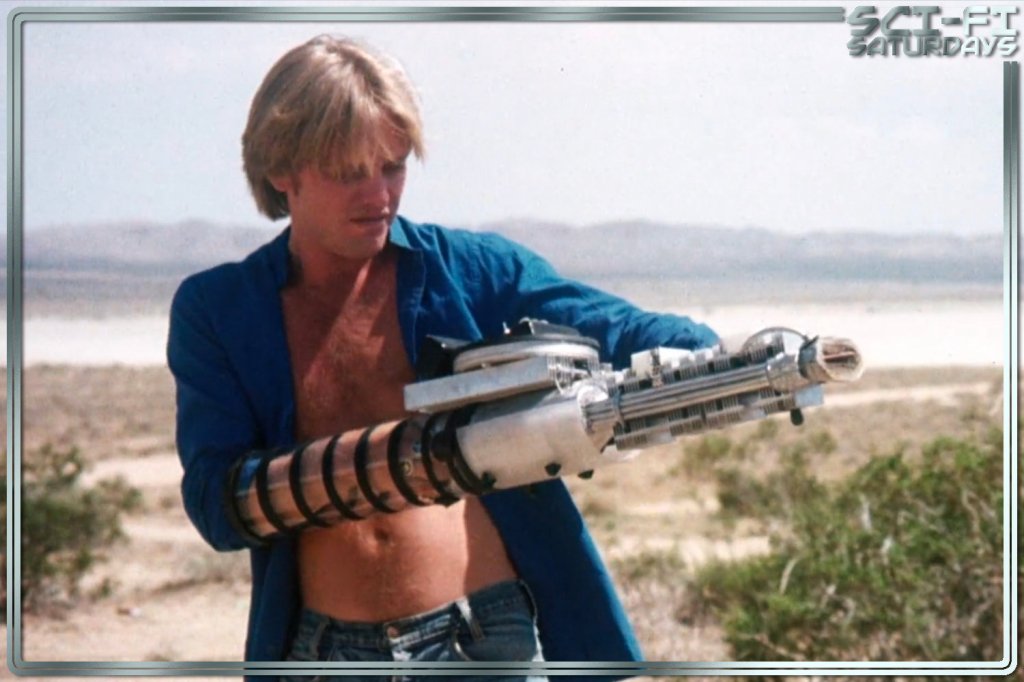
Laserblast: Laserblast is what happens when you have an idea for a special effect, but no idea how to place that idea into a competent movie. While the film has some fun (though often cheesy) special effects it’s plot is rambling and incoherent. The film stars Kim Milford, as the angsty teenager Billy Duncan (though he was 27 at the time) who finds a laser gun (that looks like a slightly painted poster tube with a CD player on top) and a pendant left in the desert by aliens. This weapon then begins to corrupt Billy, turning him into a crazed monster who blasts everything in sight, and grows a metal disc within his chest. Meanwhile the aliens, discovering their mistake. come back to stop Billy and retrieve their gun.
The only part of this movie that was any good were the effects. In particular the stop motion alien effects by Randall William Cook and David W. Allen stand out above the rest of the film’s quality. The acting in this film could best be described as embarrassingly poor especially in the scenes featuring romance and during the insufferable teen pool party. It is the slip shot writing though that really makes this film hilariously bad. The film tries to highlight Billy’s unhappy and unfocused life with cringe worthy depictions of gluttonous sheriffs, his girlfriend’s angry and dementia ridden grandfather, an absentee mother, and two local bullies, but none of this really plays much into the aliens or laser gun possession plot.
Watching some of the stop motion clips and its many explosions is far more rewarding than having to sit through the entirety of this film. Laserblast is a tedious film that goes nowhere and often doesn’t make a lot of sense.
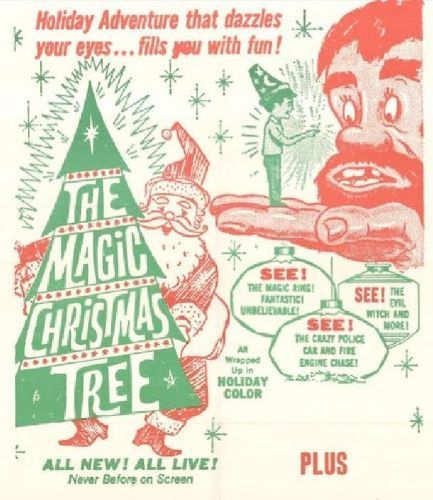
The Magical Christmas Tree: Every Christmas I try to watch a terrible holiday film. Because of this I have been exposed to such “gems,” as Santa Claus Meets the Ice Cream Bunny, Santa Claus (a film where Santa comes down from the clouds to battle the forces of Satan with the help of Merlin and a Norse god), and Santa Claus Conquers the Martians. Well all of these films are terrible, The Magical Christmas Tree probably ranks among the bottom of the list.
The Magical Christmas Tree is the story of a boy who is knocked out after helping an old woman (who is actually played by a young woman in a terrible costume). For most of the film he dreams that he receives a magical ring that brings to life a talking christmas tree that grants him three wishes. He uses these wishes selfishly, but in the end does the right thing only to be left with nothing. Then he wakes up and finds out it was all a dream.
The Magical Christmas Tree has all the amateurish trademarks I have come to expect from these types of cheaply made movies. One major clue for this is how it desperately attempts to drag itself out to feature length. Lots of the movie involves the camera man and the actors dragging through pointlessly drawn out scenes that add nothing to the film and that are a snooze fests. Some examples of this include random sequences of a kid walking in a quarry with the camera focusing on his shoes, kids talking about their lunches on a bench, and a man with a pie chasing a woman down the world’s longest street but never getting significantly closer or farther away. When things are actually happening though such as, “comedy routines,” or “moral lessons,” they aren’t much more coherent or enjoyable. Another mark of this film’s incompetence comes in the cast who for the most part never acted in anything before or after this film. Even the director only worked on this film before calling it a day which kind of says it all.
This film is in good company with the other cheesy holiday films I have seen, and is only possibly topped in terribleness by Santa meets the Ice Cream Bunny. When the best parts of the film (other than when it ended) featured a confused big man who couldn’t decide whether or not to kidnap the selfish lead boy and then threatens the audience, and a turtle who lives within a nightstand you know you’re in trouble.
Biggest movie disappointments:
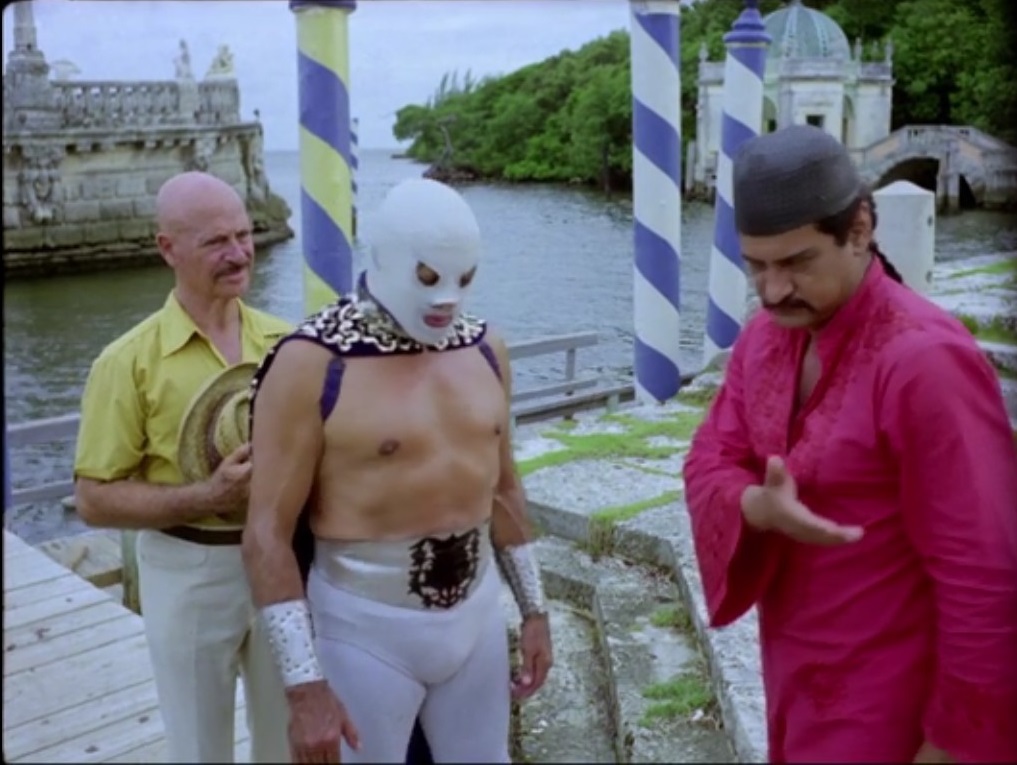
Santo and The Fist of Death: Even among Santo films this one is BAD! Fist of Death features Santo in one of his final roles. The film has him heading through the Florida everglades (a Jungle stand in) to help a tribe of karate “experts,” who worship a C-3P0 head defeat a scantily clad evil sorceress leader (who is played by Grace Renat, who also plays the equally undressed leader of the good guys) and her evil minions.
This has got to be the worst Santo film I have ever seen, and I’ve seen a great deal of them (many of which are also terrible). Nothing in the film works, least of all Santo who was less than two years from passing away. It is really sad to see just how frail he is in this film compared to his earlier pictures. Instead of impressing the audience with his physical skills Santo is instead helped along and extremely protected by his co-stars. The result is that the fights are incredibly dull and lifeless, which isn’t helped by Santo’s wooden acting.
To try to compensate for this issue the film tries to appeal to the karate craze and with the sex-appeal of Renat. Neither of these things though can disguise how poor this film is. The karate fighting is an especially bad imitation of a bad Hollywood imitation of a martial arts film, and only adds even more racism to the surrounding terribleness of everything. This is a film so bad that it eclipses all other Santo films I have seen (which is no easy feat), and is one I would not recommend subjecting yourself to even for camp value.
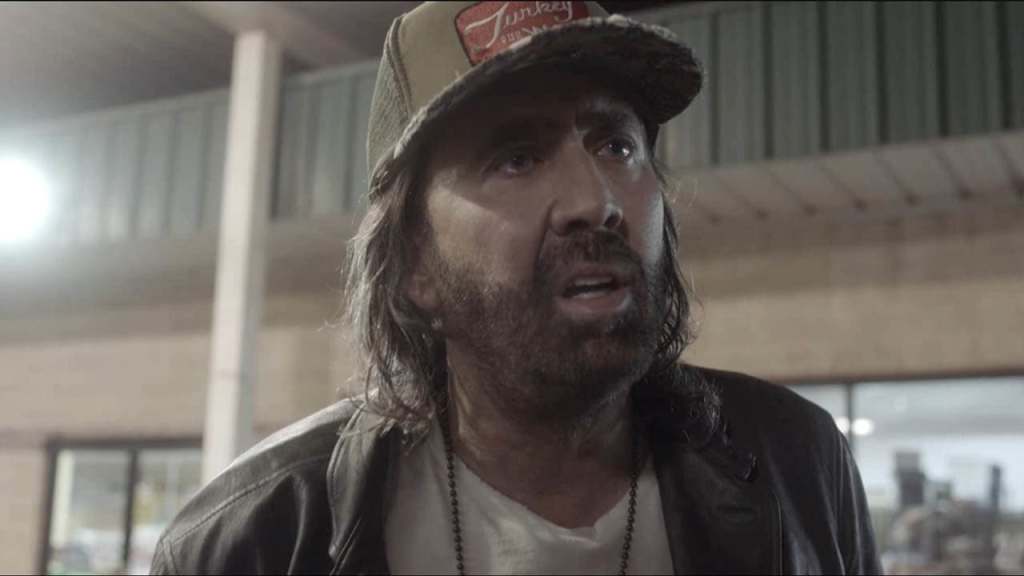
Between Worlds: Based on the description I read online I thought that this film was going to be a cheesy good time; boy was I wrong! Instead of a fun romp through cheesy plot points, Between Worlds is a depressing and uncomfortable slog of a film that even Cage cannot save.
Between Worlds stars Nicolas Cage as Joe Majors, a down on his luck trucker. He soon runs into Julie, a desperate single mother who wants Joe to choke her so that she can have a near death experience to help her comatose daughter Billie. Having tragically lost his own family Joe reluctantly agrees to help, and eventually starts to form a bond with Julie. While Billie does recover she begins to act strangely and develops her own unusual interest in Joe.
Even setting aside my disappointment about the film not meeting my expectations this isn’t a good film. While I love Cage and think he elevates the film I don’t think that his presence is enough to save it from all its issues. One major issue with the film is with its depiction of sexuality. While sexual content and relationships with major age gaps in the right hands can be handled interestingly, in this film it just comes off as uncomfortable and voyeuristic. Another issue with the film is that its characters are just not likeable or good enough to make up for this lack of likeability. The result is that it is hard to invest in any of them or overlook the many cliches found within the plot and the film’s poor production values.
Between Worlds is a mess that isn’t even fun enough to fall into the so bad it is good category nor smart enough to warrant its unpleasantness.

Abbott and Costello go to Mars: Abbott and Costello can be very funny. During their prime their comedy was filled with fast banter, energised slapstick and routines, and lots of great word play. If all you ever saw of them though was Abbott and Costello go to Mars you would wonder what the big deal was.
Abbott and Costello go to Mars ironically doesn’t even have the couple ever reach Mars. Instead they end up accidentally launching an experimental rocket that first lands in New Orleans during Mardi Gra, and then on Venus where they find an advanced race of women. During their adventure they also end up running into a pair of crooks that feel like cheap counterparts to the blundering couple.
This film just isn’t fun. Unlike other films starring the duo this film substitutes energy and wit for repeated cheap gags that almost never land. There’s nothing worse than a comedy that just isn’t funny, especially when that humour comes off as dated and offensive. Especially cringe-inducing is the part of the film where Abbott, Costello, and the two crooks end up on Venus alongside a society of scantily clad women. The jokes first about the women first being sexually deprived and making Costello their king, and then rejecting the men after they discover other more masculine men are on earth is misogynistic and painful to watch.
Watching this film and reading up on it, it appears that the duo were almost as bored making Abbott and Costello go to Mars as I was watching it. Just watch an earlier effort of theirs such as Buck Privates or Abbott and Costello Meet Frankenstein instead.
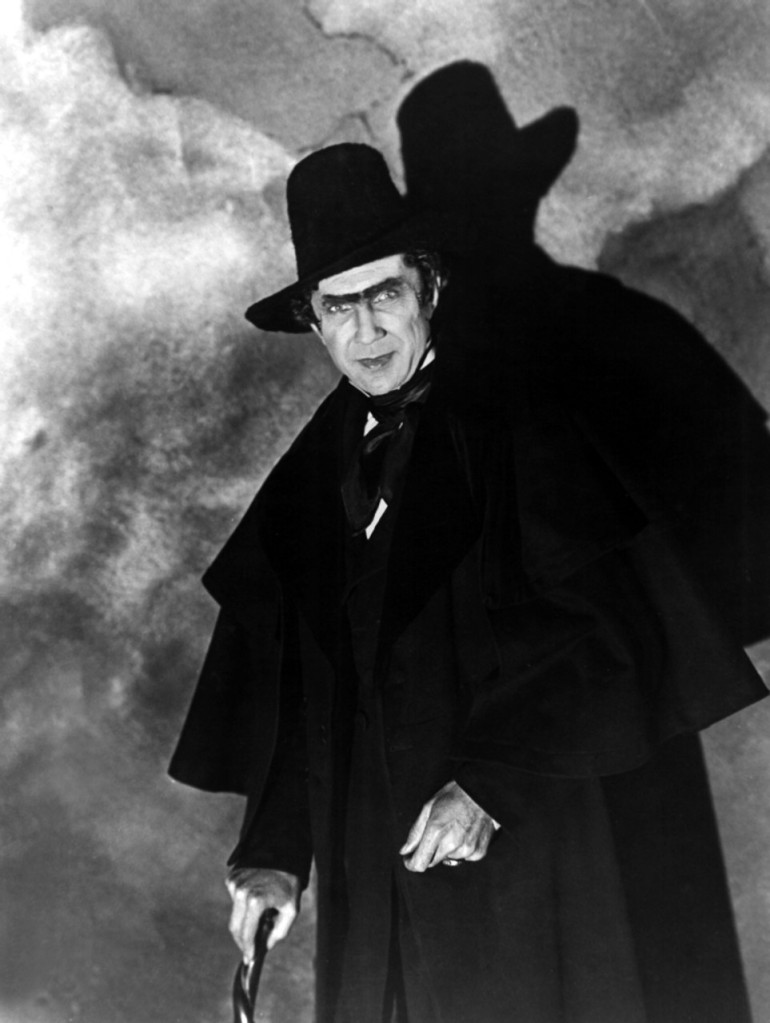
Murders in the Rue Morgue: Unlike other films in this list I actually didn’t dislike Murders in the Rue Morgue. The sets for the film are lovely, the cinematography by Karl Freund is incredible, and Lugosi steals the show as a driven sideshow presenter who wants to prove human’s relationship with ape’s. The problem is that the rest of the elements of the film could and should have been much better.
Murder in the Rue Morgue stars Pierre Dupin, a young medical student and amateur detective. Dupin takes his fiance Camille L’Espanaye and friends to a carnival where they meet Dr. Mirakle, a scientist and showman who wants to find a mate for his ape Erik. When Erik and the doctor take a liking to Camille they seek her out. While trying to kidnap Camille, Mirakle secretly tests and murders many other women who all fail to survive transfusions of Erik’s ape blood. Meanwhile Dupin is on the case and is trying to find out why so many dead young women have been washing up on the shore.
The plot for this film is a mess. It is unclear what Lugoisi’s character is actually trying to accomplish and equally as baffling what happens to him in the finale. Even worse though is the script and acting outside of Lugosi. Dupin is supposed to be one of the first major larger than life literary detectives, but here he goes between obsessive and analytical to a fault to love struck, dense, and passionately heroic as though the writers didn’t know what to do with him. The side characters especially, Dupin’s Fatty Arbuckle like housemate provide awkward dialogue that isn’t funny and adds to the film’s tonal issues. Far too frequently scenes fluctuate between dreadful comedy routines, and to brutalised corpses or the sinister presence of Lugiosi.
It’s a real shame how uneven this film is. If the movie had a better story that complemented the atmospheric expressionist shots and scenery, and a stronger cast and script that could match or at least support Lugosi’s acting this film could have been a real classic. As it stands it isn’t a terrible film, especially for Universal fans, but it also fails to live up to its potential and to come anywhere close to the studios best films.
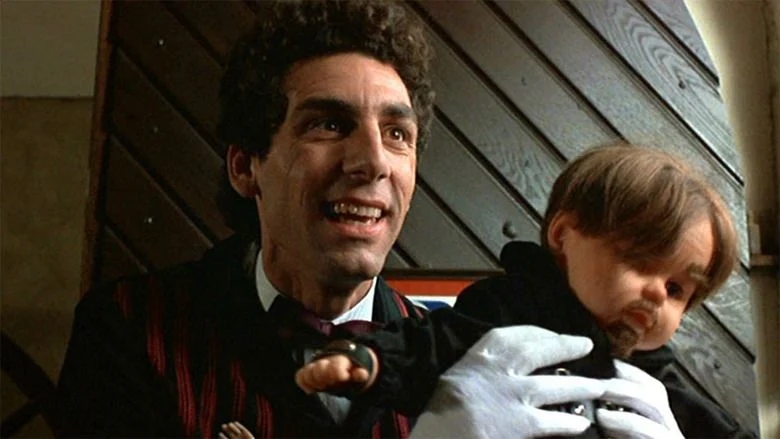
Transylvania 6-5000: This film was largely the result of legal complications with the Yugoslavian government. Forced to reinvest in the country the Dow Chemical Company decided to support this film and have most of the movie shot within Yugoslavia in order to make back its money. Sadly this infamous story is the most interesting aspect of the film.
The film “star’s,” Jack Harrison and Gil Turner, a couple of bumbling reporters sent to Transylvania to research a Frankenstein story. Gil is convinced that something suspicious is going on and that many town officials are in on it, while a reluctant Jack just wants to woo Elizabeth Ellison, another tourist visiting the country with her daughter.
Transylvania 6-5000 is a horror comedy that is neither spooky nor funny. The characters are all grating and unlikable, especially the horndog reporter Jack played by Jeff Goldblum and an obnoxious butler played by future seinfeld actor Michael Richards. What is worse though then the weak plot and characters is that the film isn’t funny at all. Despite an all star cast the humour in this film just doesn’t work, and falls painfully flat.
Those hoping that the elements borrowed and parodied from the Universal Monster canon would fare any better than the humour though would also be disappointed. The monsters and their designs are at best stock, and don’t inspire fear, interest, or laughter. What they did inspire in me though was a deep apathy and bitter disappointment. Time and time again horror comedy films have shown that making good classic monster movie pastiches is absolutely possible. Somehow though, despite a plethora of talent the most horrifying aspect of this film is that it features Jeffery Jones.
I’m afraid I totally agree with the review for this film by Leonard Maltin, “Pennsylvania 6-5000…Stinks.” What should have been a fun and entertaining romp instead feels exactly like the ill advised chemical company investment project it is.

